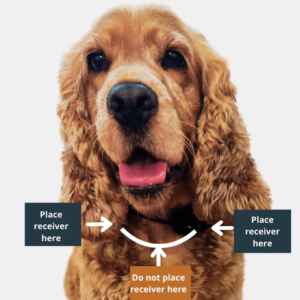Do you intend to purchase a dog training collar? A dog training collar is used by dog parents for several reasons. Many believe that this is their last chance and that they have run out of other options.
A dog training tip collar may be useful if your dog is persistently barking, running out the door, acting naughty, or if you’re having trouble training them. Here are five suggestions to help you get the most out of your dog training collar if you’re thinking about obtaining one!
What is a Dog Training E-Collar? A Dog Training Tips E-Collar: What is It?
Before moving on to the advice, let’s first clarify what a training collar is. An e-collar is another term for a dog training collar. It’s a system that your dog wears along with a remote control and receiver. Different distraction modes are frequently included in dog training collars to divert your dog from certain behaviors. Typically, there are three modes: static, vibration, and sound. It is possible to train manually using the remote control. Thus, it is highly effective for non-repetitive behaviors such as teaching your dog to stay put or to recall objects.
What Age Is It Appropriate to Begin Dog Training Collar Training?
Canines older than six months can safely wear training collars. Dogs younger than this might not be fully trained in the fundamental commands, which might make collar training complex. Before beginning with a dog training collar, your dog needs to be consistently obeying the three fundamental commands: sit, come, and heel.
Dog Training Tips 1: Find your dog’s collar setting.
It’s crucial to find your training collar’s ideal setting! The ideal situation will cause your dog to become aware of the distraction and put down their current activity. Start slowly and observe your dog’s response to the distraction. Although you should always start low to test this, some dogs may not be able to feel or hear the lowest settings. Your dog should never suffer injury or needless stress as a result of the distraction.
The majority of dog training collars come with many intensities and modes (such as vibration, sound, and static) that allow you to customize the distraction for your dog based on their breed, size, and nature.
Start with the lowest mode and intensity (e.g., Sound at level 1) to get the ideal setting for your dog. Then, watch your dog to see how they respond to the distraction. Keep an eye out for actions like as gazing about, shaking their head, or turning their head over their shoulder.
Increase the distraction’s intensity or mode gradually if they don’t respond to it. A setting that is both noticeable and stress-free for your dog is the perfect balance. Once the ideal configuration has been achieved, sporadically try the distraction to make sure the dog training collar is causing a reaction.
Read More: Best Barking Collar for Large Dogs
Dog Training Tips 2: Verify that the collar fits correctly.
Unbelievably, fitting a dog training collar involves more skill! The collar must always fit properly and be in the right place. Make sure the collar is turned off before fitting it on your dog. Put the collar on the dog that is standing. One or two fingers should be able to fit between the dog and the collar.
When using your fingertips to measure the collar’s fit, use your judgment. You would only notice a one-finger difference on a small dog, such as a Chihuahua because a two- or three-finger separation increases the likelihood that the collar may come off the dog. For a large, fluffy dog like a German Shepherd, a two-finger difference will let the collar to fit comfortably without slipping off.
The dog’s side of the neck, not its throat, is where the receiver should be positioned high. Swap the side where the receiver sits whenever you use the collar more than once to prevent annoyance.

Before ever turning the collar on, give your dog a few hours each day to get acclimated to wearing it. Your dog will learn from it that the training collar is just like any other collar. We want more from your dog than just good behavior when wearing a training collar.
Dog Training Tips 3: Employ Uniform Directives
Make sure your dog is familiar with the fundamental commands, “Sit,” “Come,” and “Heel,” and that they follow them consistently before introducing a training collar into the mix.
Be consistent with the commands you teach when introducing new ones using the training collar. Every time, use the same term to describe the same action.
Remember to use prizes to add some fun and lightheartedness to your dog’s training sessions!
Once a new command has been introduced, follow the same procedure for each command.
The steps in the teaching recall example would be as follows:
spoken directive “here.”
Start sending out a diversion.
Bring your dog gradually closer to you by using a lead.
Reward
They will be showing improvement if they react to your “here” order right away.
Read More: How to Use E-Collar for Recall?
Dog Training Tips 4: Recognize Your Limits
A great tool for anyone looking to teach their dog certain habits (such as recall, jumping, or rough play) is a dog training collar. However, they are not without restrictions. For instance, if you want the collar to help prevent your dog from running off, you might need a somewhat different product. Alternatively, if your dog has a problem with excessive barking, think about getting a bark collar or a dog training collar with an auto-bark option. When a dog barks too much, an auto-bark collar will recognize it and sound a diversion. Compared to trying to wait it out and use the remote every time your dog barks excessively, this is far easier.
An electronic fence for dogs could be a better option if your pet tends to escape. Your dog will only be distracted by an e-fence collar if it is placed too close to a fence line. The location of that boundary is up to you. Perhaps it’s around an animal enclosure, your garden bed, or a particular fence line.
If your dog is barking or running away and you have to use a remote training collar, think about whether these other solutions may be a better fit.
Dog Training Tips 5: Make Research
Although difficult, dog training is incredibly rewarding. You must learn how to use any new equipment, such as a dog training collar, in your training before using it.
It is very helpful to understand the functions, restrictions, and proper usage of a dog collar.
To design your training regimen, we advise gathering information from several dog trainers so that you can observe their methods, identify recurring themes, and pick up little nuggets of advice. Every dog is unique, thus teaching them will never be the same.
Please don’t hesitate to get in touch with our customer support team if you have any questions about which collar would be ideal for your dog. We enjoy matching collars that meet the needs of dogs and their owners in terms of training and lifestyle.

